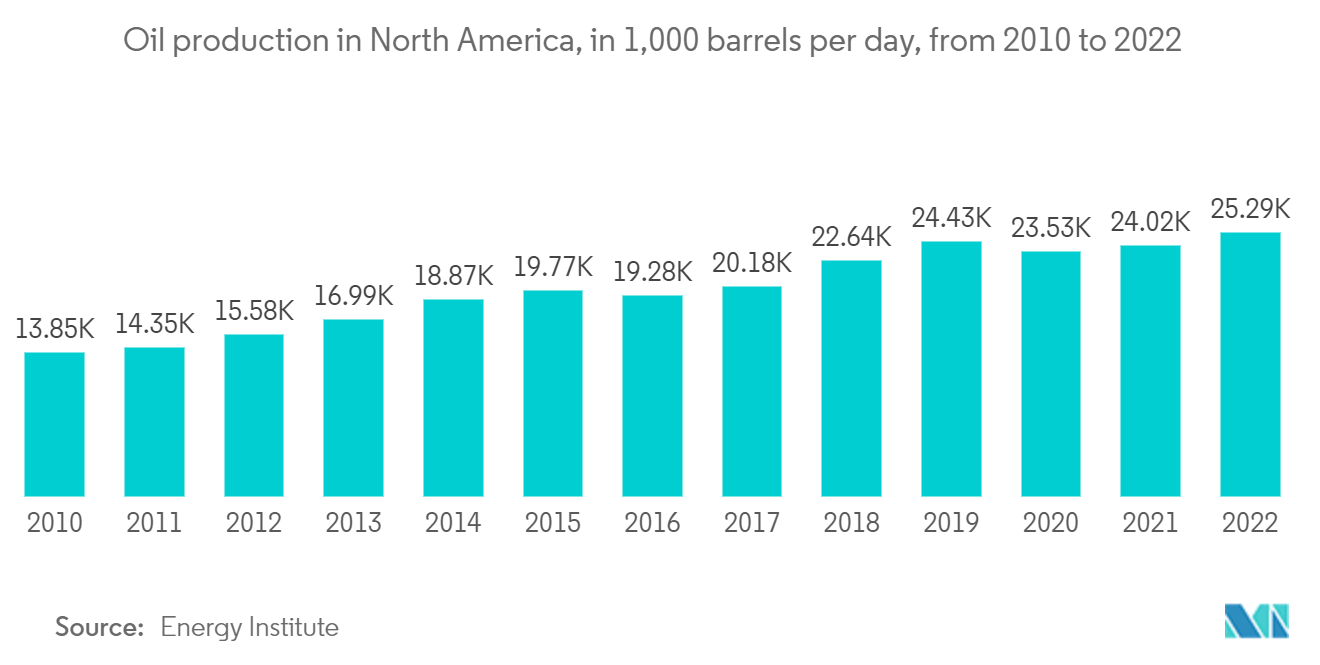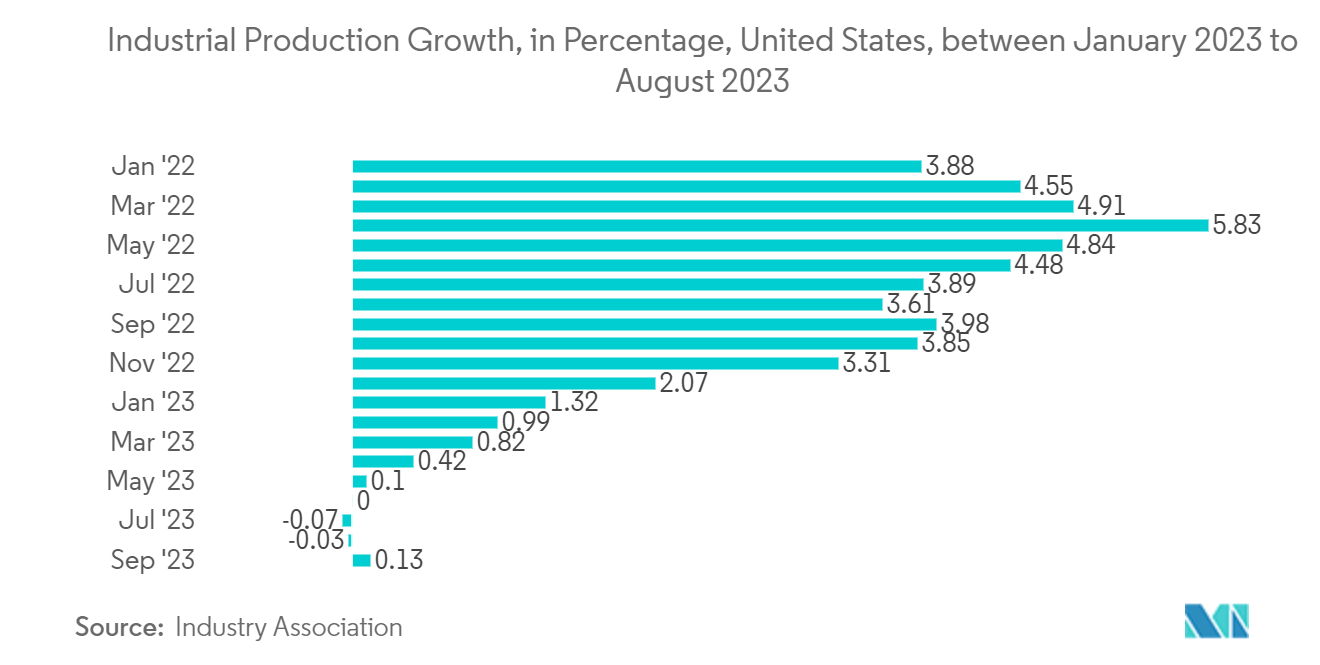Market Trends of North America Industrial Waste Management Industry
Oil and gas Production is Expected to Dominated the Market
Rising waste generation during natural gas and crude oil exploration and production, coupled with increasingly stringent regulatory bodies, improves the demand for industrial waste management services in oil and gas production units. North America's oil production amounted to 25.3 million barrels per day in 2022, up from some 24 million barrels daily in the prior year, according to the Energy Institute.
According to the American Petroleum Institute (API), every foot drilled in the U.S. generates roughly 1.21 barrels of total drilling waste. Solid drilling trash accounts for roughly half of the total drilling waste. Approximately 139,961,305 barrels of solid drilling waste are generated, equivalent to 29,097,984 cubic yards of solid drilling trash.
Wastes generated during natural gas and crude oil exploration and production are regulated under state and RCRA regulations. Many state governments have specific regulations and guidance for the exploration and production of waste. In addition, some states have established legislation and regulations, including waste management standards, in reaction to the increased usage of hydraulic fracturing.
Moreover, gas and oil producers have experimented with novel techniques that combine horizontal drilling with increased stimulation in recent years. The profile of oil and gas wastes has changed due to these new processes, known as fracking, both radioactivity and volume produced. Naturally occurring radionuclides, also known as Naturally Occurring Radioactive Materials (NORM), are found in geologic strata that contain oil and gas resources.
Therefore, authorities such as the EPA and the FAO have established regulatory limits. For example, the EPA published the Oil and Gas Extraction Effluent Guidelines and Standards, including waste emissions from field exploration, drilling, production, and well management activities on land, coastal areas, and offshore. As a result, industrial plants are pushed to construct waste management plants and maintain them regularly

United States Witnessing Lucrative Growth
The expanding population and increased globalization have increased waste volume, pushing the industrial waste management industry forward in the United States. Unlawful dumping, increased pollution, and increased environmental awareness have all contributed to the strong growth of the market. Furthermore, rising industrialization in the United States, which generates large amounts of waste, propels the industrial waste management market forward. Moreover, the implementation of stringent government norms is expected to fuel the industrial waste management industry’s growth.
For instance, the Environmental Protection Agency (EPA) has set out guidelines for disposing of various types of industrial and hazardous waste in the US. Failing to adhere to these federal and local regulations can result in strict penalties, including civil penalties of up to USD 70,117 per day per violation.
Moreover, many of the largest waste management companies worldwide are based in the U.S., such as industry giants Waste Management Inc. and Republic Services. Headquartered in Houston, Texas, Waste Management Inc. generated a revenue of roughly 20 billion U.S. dollars in 2022. Through its subsidiaries, the company operates a large network of landfills and waste management services across the U.S. and Canada. Meanwhile, Arizona-based Republic Services generated revenue of some 13.5 billion U.S. dollars in 2022. Combined, the two companies account for roughly half of the landfill volume managed in the U.S. Owing to the above factors, the United States is expected to dominate the North American Industrial Waste Management Market.


